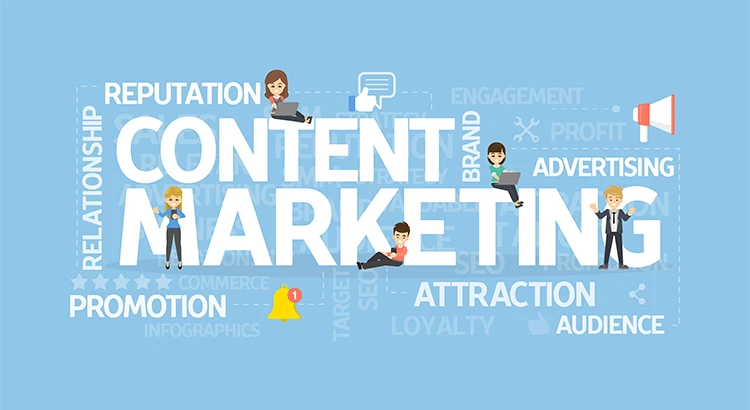The best content marketing strategies help businesses connect meaningfully with their audience, driving long-term loyalty and increased conversions. These approaches focus on creating value through informative and relevant resources. When implemented correctly, they build trust, spark curiosity, and strengthen customer relationships. This article explores proven tactics to increase engagement and support your business goals.
What Is Content Marketing?
It is the practice of developing and distributing informative materials that educate and attract your audience. These resources can take the form of blog posts, videos, podcasts, or visuals, shared across platforms such as websites, social channels, and email. The goal is to build trust and encourage meaningful interaction over time.
Once interest is nurtured, audiences are more likely to engage with detailed product guides, demos, and reviews. A strong approach empowers buyers to make informed decisions while allowing your team to focus on addressing complex needs and questions. The top content marketing agencies utilize the techniques to drive awareness, improve customer engagement, and generate long-term brand loyalty.
Benefits of Content Promotion
A consistent, value-driven approach can unlock multiple advantages for businesses across industries. Here are some key benefits:
1. Builds Credibility
Sharing expert insights and practical knowledge positions your business as a trusted authority in your field, strengthening your reputation among prospects and peers.
2. Improves Visibility
Publishing materials aligned with current trends and audience interests enhances your website’s search performance, increasing your chances of being discovered online.
3. Encourages Exploration
Compelling topics can spark interest and lead potential customers to explore deeper resources like tutorials, product walkthroughs, or webinars.
4. Strengthens Loyalty
Engaging and helpful resources help retain existing customers, reinforcing their connection to your brand and encouraging repeat interactions.
5. Enhances Messaging
Regular updates enable you to refine your communication to reflect changing market dynamics or emerging customer needs.
6. Reduces Costs
A well-structured approach can reduce overall advertising expenses by generating long-term organic traffic and boosting ROI.
How to Build a Content Promotion Strategy?
This section outlines practical steps and best practices to craft an effective plan.
1. Set a Goal
Every successful plan begins with a clear objective. Before you begin producing or promoting any materials, identify what you want to accomplish. Your core aim will influence the direction, tone, and type of resources you create, so clarity is essential from the start.
Some common targets include:
- Positioning your brand as a trusted authority in your industry
- Growing organic search traffic by 50% within the next year
- Achieving a 30% increase in annual sales
- Boosting customer retention rates by 20%
- Earning 1,000 quality backlinks in six months
2. Understand Your Audience
Once your objective is clear, the next step is to deeply understand who you’re trying to reach. Even the most well-crafted resources won’t deliver results if they fail to connect with the right people.
Start by asking key questions:
- Who are they beyond age or location? Explore their values, challenges, goals, and concerns.
- What specific issues are they facing that your product or service can help solve?
- Where do they spend their time online, and which platforms or sources do they trust most?
- What kind of materials truly grab their attention and motivate them to act?
Avoid relying on assumptions. Use data from customer interviews, surveys, feedback forms, or analytics tools to guide your understanding.
3. Choose Your Content Types
Next, decide which formats you’ll prioritize based on your objectives and what your audience prefers. There are many options to consider, including:
- Blog articles
- Videos
- Podcasts
- Ebooks
- Infographics
The right mix depends on both your goals and the insights you’ve gathered about your audience.
4. Find Topic Ideas to Cover
At this stage, it’s time to uncover the specific subjects your materials will focus on. If your plan includes blog material, you’ll want to target themes that attract high search interest.
Choosing topics with strong demand ensures that your efforts can drive consistent, unpaid traffic—especially important if organic growth is one of your primary objectives.
5. Prioritize Topics with High Potential
With a list of potential subjects in hand, the next move is to decide which ones deserve your attention first. Use your main objective to guide this process.
For instance, if you’re aiming to boost traffic through search, focus on topics that already show strong monthly interest. Prioritizing high-demand areas helps you get the most return from your efforts early on.
6. Create a Content Calendar
Once your topics are in order, organize them into a structured publishing plan. A calendar helps you map out what’s coming next and ensures smooth coordination across your team. It typically includes key details like:
- Subject and working title
- Assigned team member
- Format (blog, video, etc.)
- Current stage (writing, editing, production)
- Deadline or publish date
Having this overview promotes consistency and keeps your output aligned with your overall goals. Clearly outlining roles and deadlines also helps avoid confusion, ensuring everyone knows what’s expected and when.
7. Promote Your Material
Creating high-quality material is only part of the equation—you also need a solid plan to get it in front of the right audience. Promotion is what turns your effort into impact.
Here are some effective distribution techniques:
- Email campaigns: Keep subscribers informed and encourage interaction with new posts or updates
- Social media sharing: Leverage your platforms to extend reach and spark conversations
- Paid promotions: Consider Google or Meta ads to amplify reach when budget allows
- Syndication: Republish your work on platforms like Medium to access broader audiences
- Media outreach: Use public relations efforts to earn placements in trusted industry publications
- Collaborations with influencers: Work with established voices in your niche to increase exposure
- Search optimization: Fine-tune your pages to improve visibility in search engine results
Choose the channels that best match your objectives, budget, and where your audience spends time. Not every method will be a fit, so focus on the ones that align with your priorities. Marketing tools can support these efforts by helping you streamline distribution, monitor performance, and refine your approach across different platforms.
8. Monitor Your Performance
A successful approach doesn’t stop at creating and promoting material. Ongoing performance tracking is crucial to assess whether your efforts are aligning with your goals and to identify areas for improvement.
The metrics you monitor will vary based on your objectives. Regular analysis helps you adjust tactics, optimize your strategy, and ensure continued progress.
Content Marketing Examples
Here are some different content promotion examples:
1. Blog Posts
Regularly updated articles that provide valuable insights, tips, and information on specific topics.
2. Videos
Engaging videos that can range from tutorials to brand stories or product demos.
3. Podcasts
Audio material that allows businesses to share expertise, interviews, or discussions on industry trends.
4. Ebooks
In-depth resources that offer detailed information, research, or guides, often in exchange for lead generation.
5. Infographics
Visually appealing, data-driven material designed to make complex information easy to understand and share.
6. Webinars
Live online seminars where businesses interact with an audience in real-time, providing valuable insights on particular topics.
7. Case Studies
Detailed accounts of how products or services have helped solve real-life problems for clients.
8. White Papers
Comprehensive reports or guides focused on specific issues, often offering solutions and expert opinions.
9. Email Newsletters
Regularly sent emails containing company updates, news, and curated material for a specific audience.
10. Social Media Posts
Short-form material shared on platforms like Instagram, Twitter, or LinkedIn to connect with audiences and promote engagement.
11. User-Generated Content
Material created by customers or followers, often shared on social media or websites, like reviews, testimonials, or photos.
12. Interactive Content
Quizzes, polls, or calculators that encourage users to engage actively with your brand.
13. Guest Blogging
Writing articles for other websites or blogs to reach a new audience while showcasing expertise.
14. Online Courses
Providing educational material in a structured format to teach your audience new skills related to your product or industry.
15. Content Curation
Sharing relevant and interesting material from third-party sources with your audience, adding your own insights or commentary.
Summary
Using the best tactics to engage audiences through relevant, high-quality materials is more effective than ever. Businesses that focus on building trust, providing consistent value, and listening to customer needs often see stronger results. By applying the right techniques, your brand can foster deeper relationships and drive sustainable growth.


